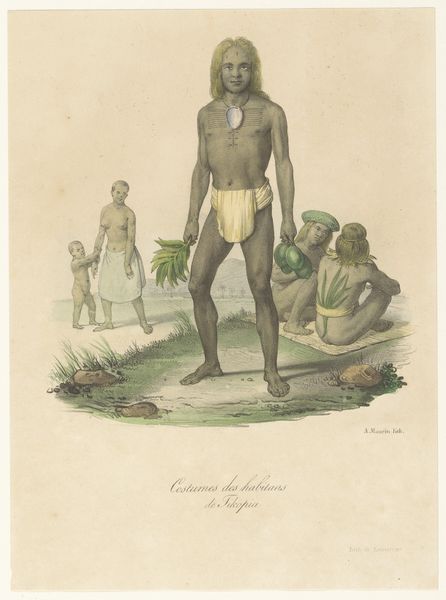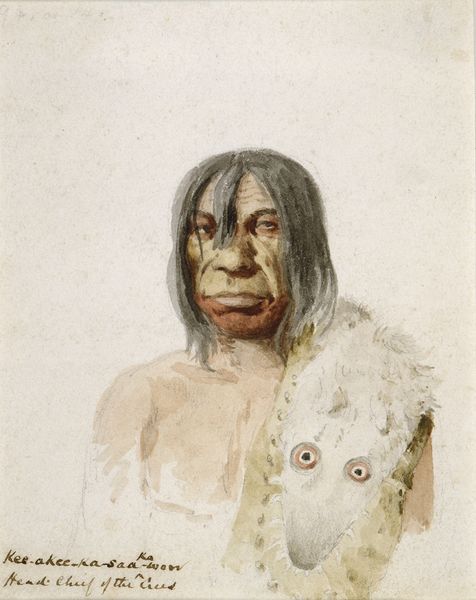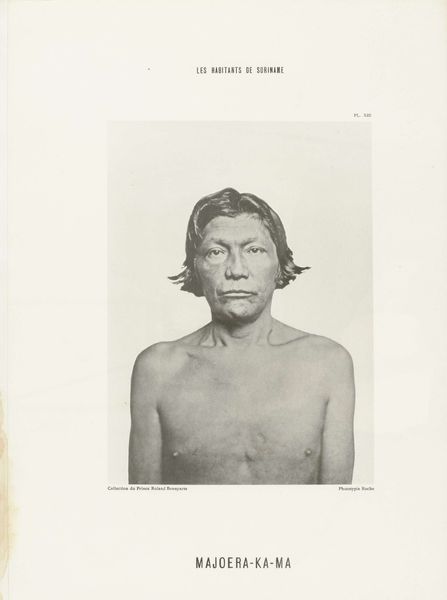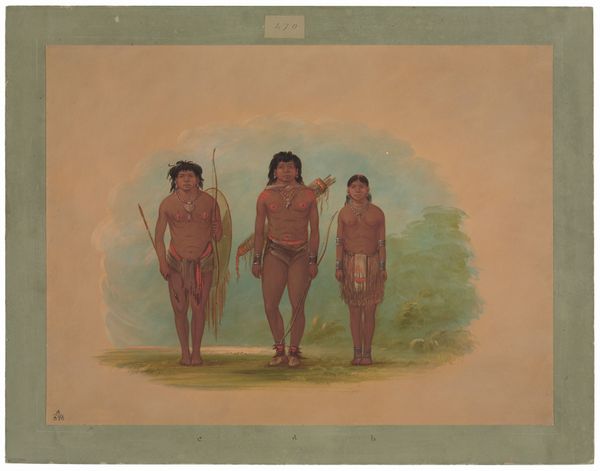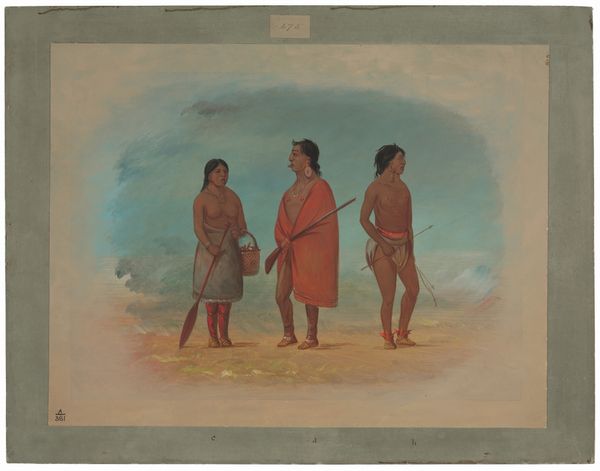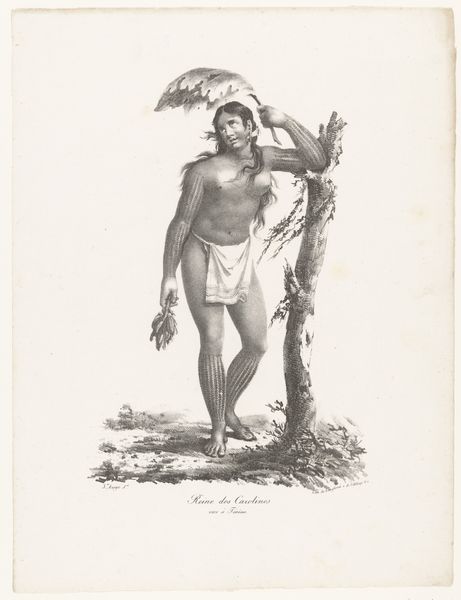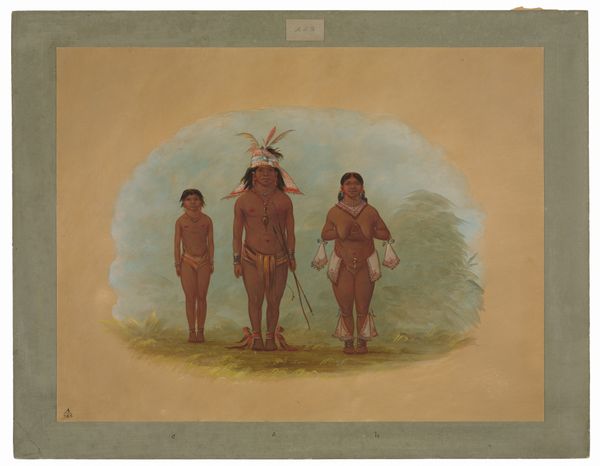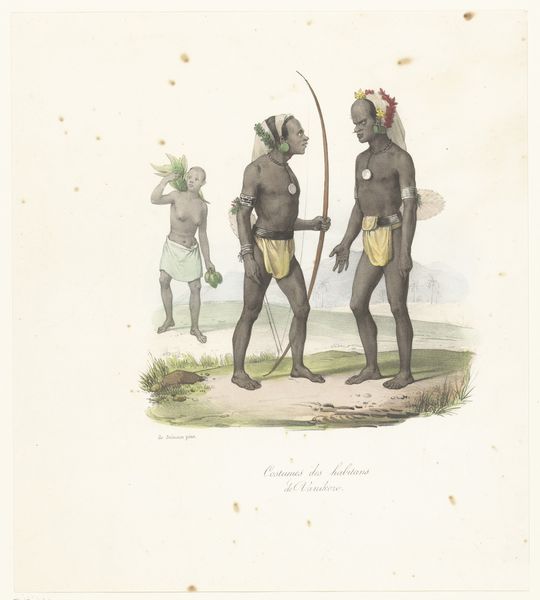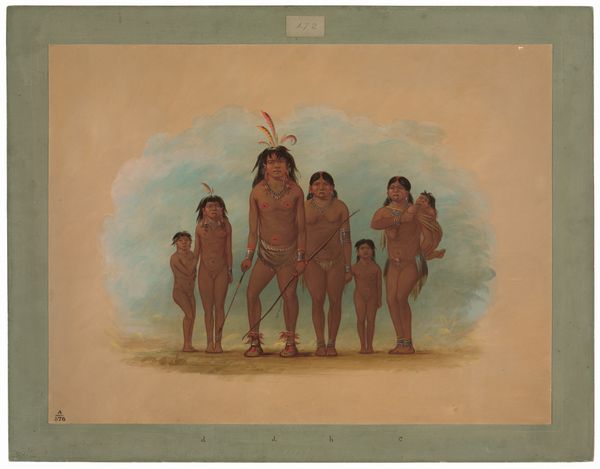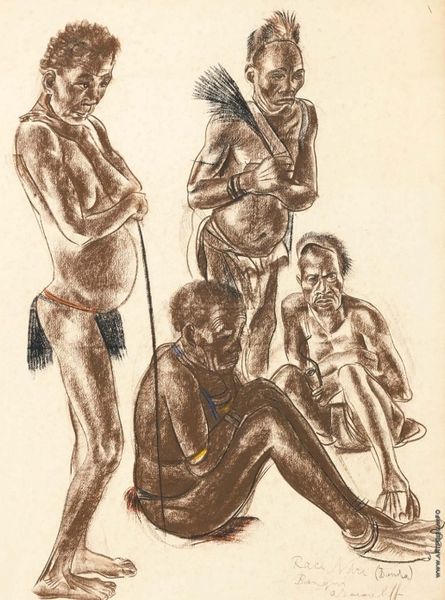
Zittende man, afkomstig van de Oostelijke eilanden, met wit broekje c. 1837 - 1854
0:00
0:00
drawing, plein-air, watercolor
#
portrait
#
drawing
#
plein-air
#
pencil sketch
#
caricature
#
watercolor
#
pencil drawing
#
romanticism
#
portrait drawing
#
watercolour illustration
#
genre-painting
#
watercolor
Dimensions: height 231 mm, width 173 mm
Copyright: Rijks Museum: Open Domain
Curator: Let’s turn our attention to this intriguing piece titled "Zittende man, afkomstig van de Oostelijke eilanden, met wit broekje"—Seated man, from the Eastern islands, with white shorts. It's attributed to Ernest Alfred Hardouin and dates from approximately 1837 to 1854. The artwork uses watercolor and pencil. What’s your initial take? Editor: Stark. Almost severe. The contrast of the dark figure against the pale beach and sky, the man’s intense gaze… there's a disquieting directness to it. The brushstrokes are quite economical. Curator: Yes, Hardouin certainly employs a minimalist technique. Observe the composition: a triangular structure anchors the seated figure, while the horizontal lines of the beach and ocean emphasize stillness. The muted palette reinforces this sense of quietude, yet that starkness you mentioned is definitely present. It is beautifully simple in construction. Editor: It’s the "white shorts" that puzzle me, though. It clashes somewhat with the perceived "authenticity" or "naturalness" the scene attempts to evoke. Is it perhaps symbolic of colonial presence? The imposition of European mores? I also wonder if his pose carries cultural significance within his community, since Hardouin noted that he came from the East. Curator: That's a keen observation. The "white shorts" could represent cultural intrusion or perhaps even a sign of the sitter's adaptation to colonial influence. Hardouin might have included it intentionally to express the dynamic interaction between cultures. Editor: And perhaps the beach itself… it functions as a liminal space, a border zone where cultures meet and perhaps clash. The water and the sand, a representation of the subconscious meeting the conscious world, and the individual situated in that cross section, so to speak. The drawing isn't merely a portrait; it's a cultural document of a time of enormous and difficult shifts. Curator: A perceptive reading. Hardouin captures not just the physical appearance but also the psychological and cultural space the man occupies. There's a lot of symbolic weight packed into such a seemingly simple plein-air drawing. Editor: It offers a stark window into a complex historical moment and human experience. I leave with a far deeper respect for the artwork. Curator: Indeed, a brilliant observation about the meeting of civilizations in the Pacific from the past.
Comments
No comments
Be the first to comment and join the conversation on the ultimate creative platform.
